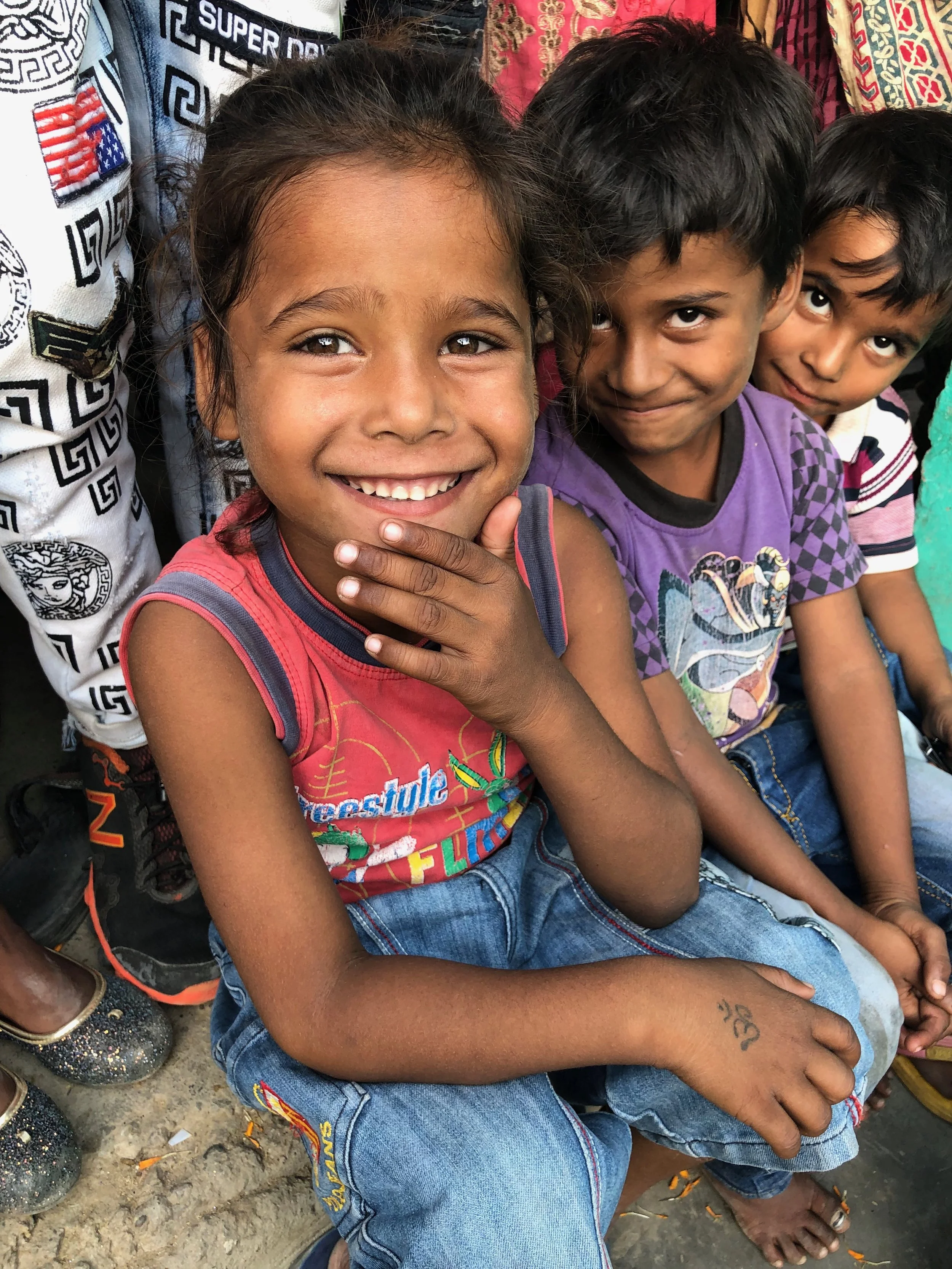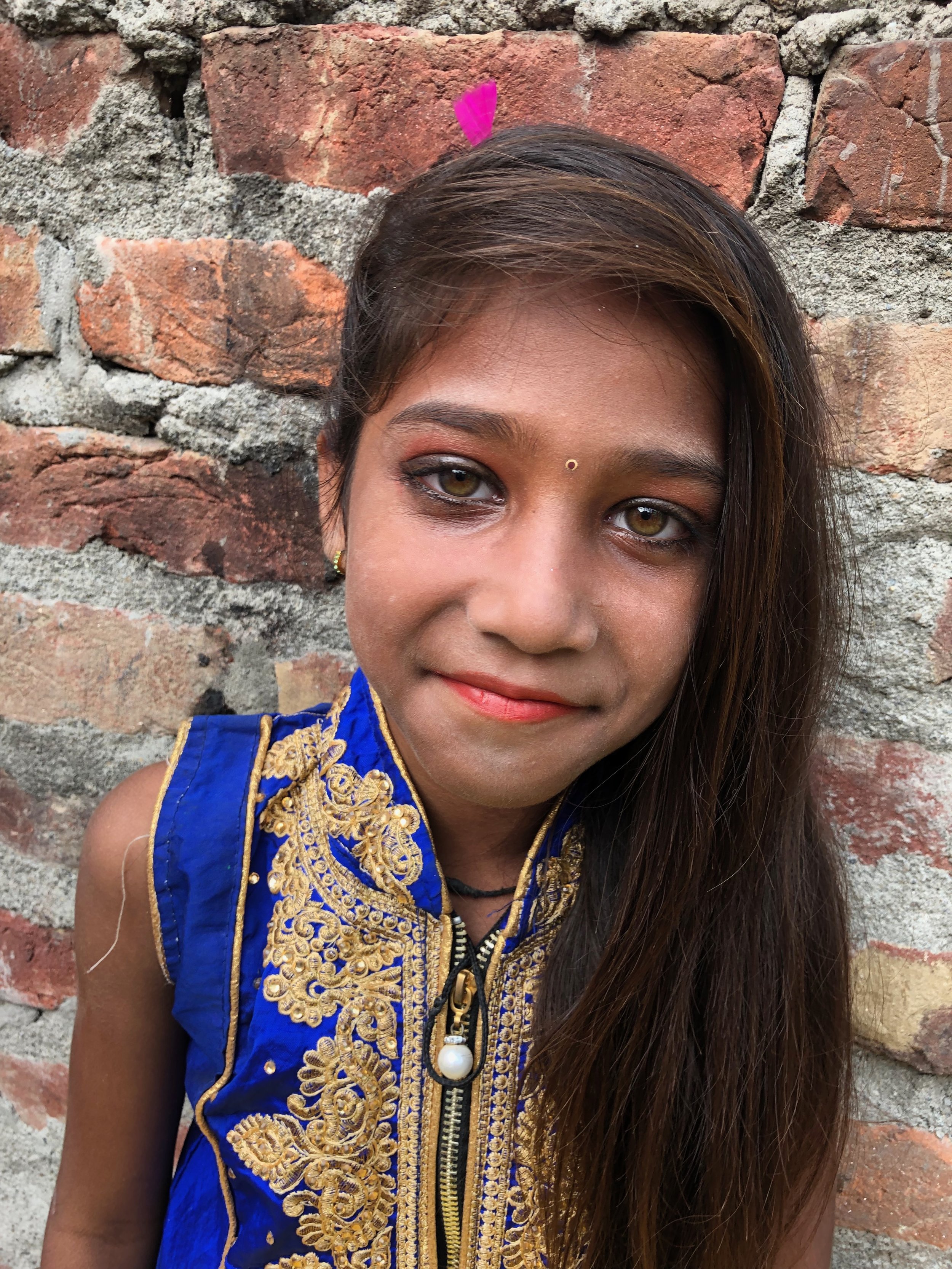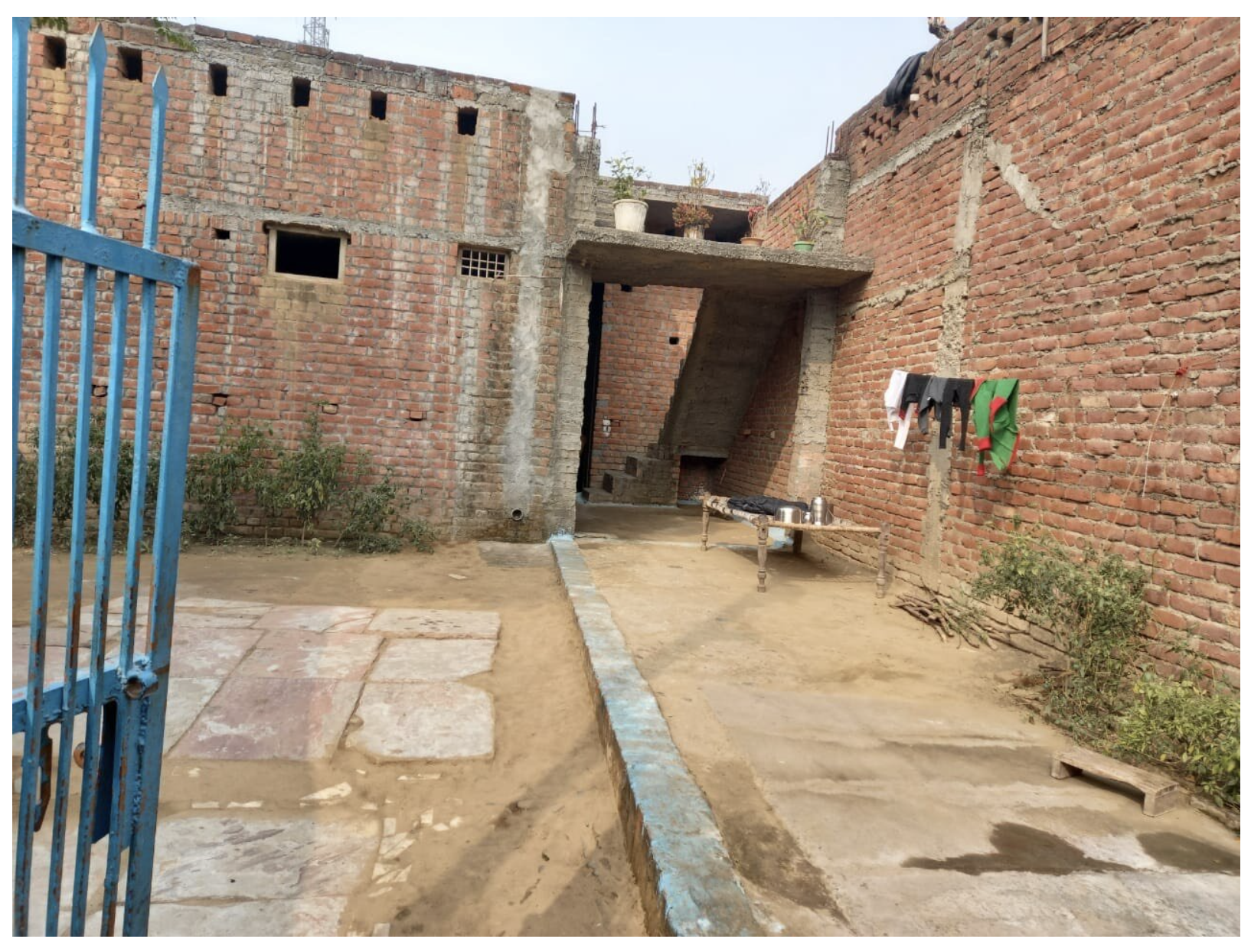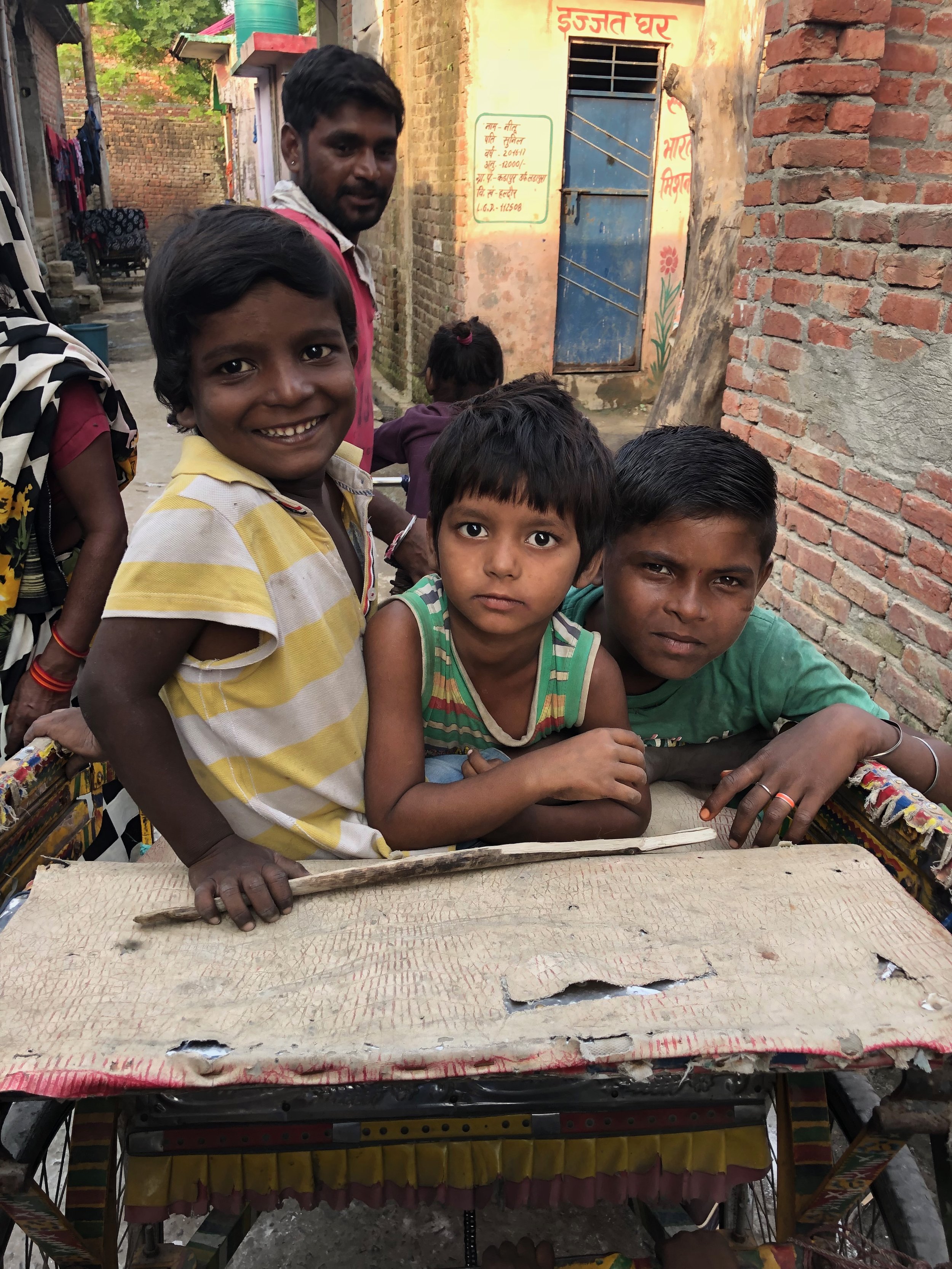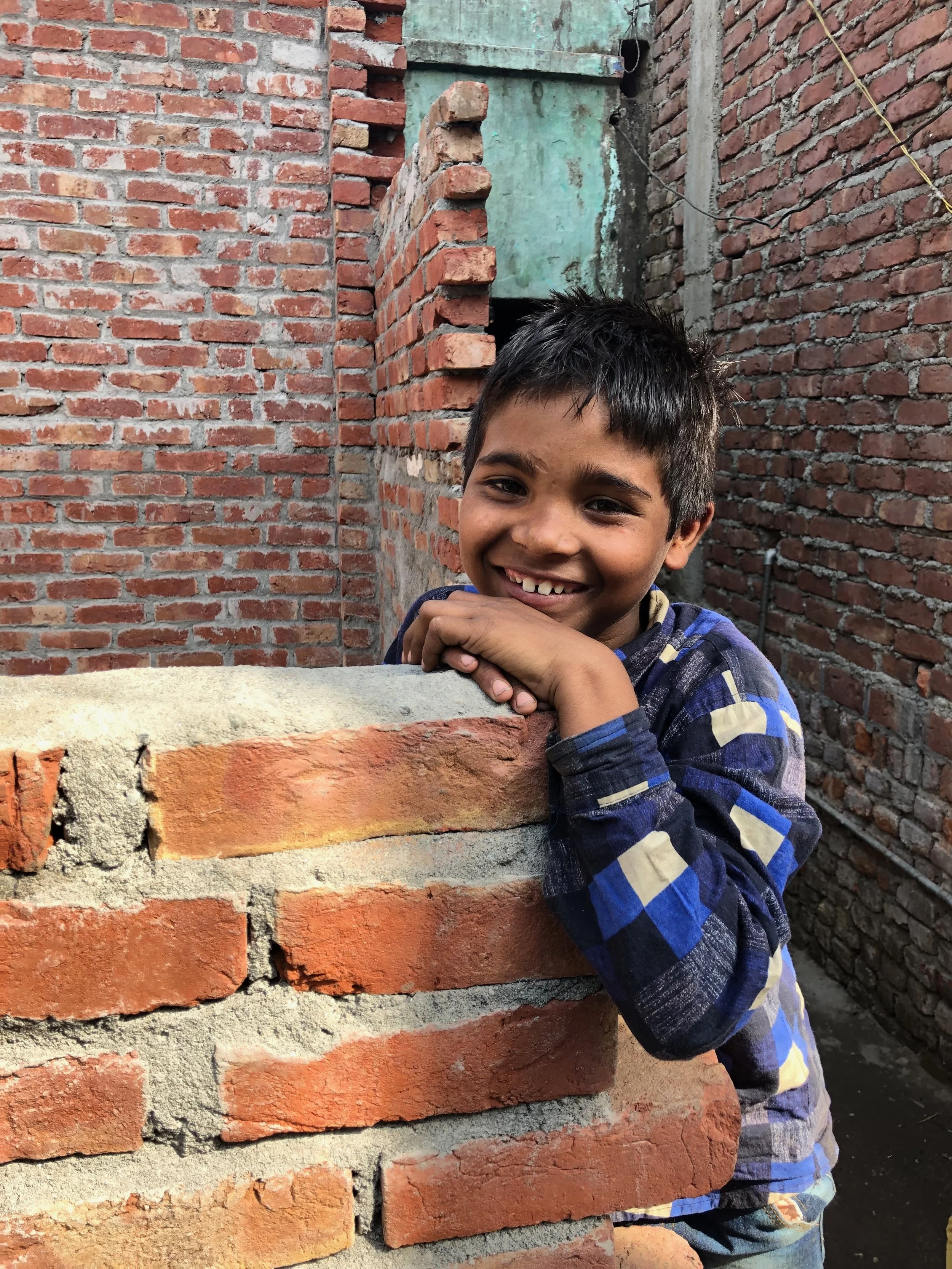Where exactly is Kotdwara?
Kotdwara (or Kotdwar), is a relatively small town by Indian standards, with a population of approximately 120 000. Located in the state of Uttrakhand known as ‘the land of Gods’, Kotdwara is 200km north-east of New Delhi which is about a crazy six hour drive. Surrounding Kotdwara are the Himalayan foothills with their remote jungle villages, small towns, scenic beauty, wild elephants, tigers and beautiful birdlife. Up in the hills, life is simple and the people are generally subsistent, poor and impacted by the forces of nature.
Kotdwara is a bustling city, semi rural and situated at the footstep of the mighty Himalayas.
Kotdwara
River Slum Centre
This large slum area was our first ever centre, and is situated on the banks of the Khoh River on the edge of the city of Kotdwara. The houses in this slum area are unsafe and unhealthy homes. Most of the houses are made of plastic, old pieces of sheet metal and cardboard. They don’t have windows, and have dirt floors, leaky walls and roofs. The homes are overcrowded, and the weak structures are often blown away or destroyed during storms and the heavy monsoon rains and floods. Here there are limited or no access to basic services like water, toilets and electricity.
This locality belongs to Dalit people. In India the Dalits are considered as the lowest caste people. They have faced exclusion and oppression in society and are frequently affected by anti-dalit violence and repression by members of other castes. They are referred to as the untouchables and considered the most oppressed class in India. They face discrimination, particularly in access to jobs, education and marriage partners. They perform work that nobody else wanted to do, such as preparing bodies for funerals, tanning hides, collecting rubbish and killing rats or other pests. Doing anything with dead cattle or cow hides was particularly unclean in Hinduism. Under both the local Hindu and Buddhist beliefs, a job that involves death corrupts the workers souls, making them unfit to mingle with other people in the community.
Project Help has raised community awareness protecting the Dalits against violence. It also mobilises and unites a community by focusing on education. Project help is a torch bearer. The people’s dignity is being restored and they are gradually accepted by society. Our Slum Centre school occupies a rented building and we have approximately 40 children attending (with usually a long wait list). The children love coming every day and they receive a large healthy meal as well. They love the delicious food. The children love coming to our Slum Centre, where there is love, belonging, fun, maths, Hindi, English, sports games, dancing, art, safety, health and hygiene lessons.
Amit and Daisy Samuel first held classes here at the slum in 2010 for 15 children under the shade of a tree.
City Centre
Aamparav is a small slum area located in the centre of Kotdwara The houses in this slum are shanty houses which because of poor quality construction or provision of basic maintenance, have deteriorated. This area lacks reliable sanitation services with a very poor supply of clean water, reliable electricity, law enforcement, and other basic services. A small stream runs beside the slum and this floods during the monsoon season. The flooding becomes a raging torrent which washes people, animals and houses away in its deadly path.
The life of kids in this locality is pitiable because of poverty and many community problems. Most of them do not have proper clothes and food. Many are malnourished and the only food they get is when they come to our school each afternoon. They love the delicious food. The children love coming here, where there is love, belonging, fun, Maths, Hindi, English, sports games, dancing, art, health and hygiene lessons.
The educational status of the people in this slum area was not so good at all. ‘Project Help India’ is the first organisation to think of their education and future. We run our child friendly education City Centre in rented premises, alongside our admin office, with approximately 50 children attending daily.
Our students receive a quality education and because of their academic achievements, we have been successful in admitting many into government schools.
Our Disability Centre
Due to a terrible crime in the area ‘Project help’ became aware that there were many children who were not going to school at all because they had a disability. Some just roamed the streets every day. We hired premises in June 2018 and invited some children. Since then we have the parents knocking on the door asking for enrolment. The children have disabilities like cerebral palsy, downs syndrome, deafness, crippled and intellectual handicaps. We have about 15 kids on the books and at about 12 show up every day. They love their teacher, friends, learning numbers and the alphabet, games, fun and they feel safe here.
Once many of our students cried because they were scared of coming to their school, now they cry because they do not want to go home.
Bijnor
2018 saw the beginning of a very special new chapter in our story - the opening of our Bijnor Centre. The majority of children who attend have never attended school before. It is such a wonderful privilege to love and care for these kids, and for the parents and families too. We have approximately 45 children attend daily.
Scroll through the map to locate the city of Bijnor, which is approximately 100km away from Kotdwara.
Village locations
Project Help India has four centres in rural villages locations located in the foothills jungle of the outer Himalayas in the State of Uttarakhand in Northern India. These villages are about a one hour drive from Kotdwara.
Village Bagnala
Village Bagnalais a small remote tribal village with a few hundred people. The tribe had been granted scheduled tribe status. The village was established more than 40 years ago, and it is still very primitive. Everything called a ‘basic amenity’ in today’s world is lacking there. There is no electricity, no water, and no toilets in the village. The water that they source comes from natural springs and is polluted so there is an added risk of falling sick very often as they do not have access to safe drinking water. Since there is no other source of water the villagers continue to risk their lives. Because of lack of electricity the livelihoods of people also suffer. They undertake agriculture, small business and daily survival without the availability of modern-day technology. As the night falls their lives depend on the fire. Their children struggle to study under the lamps.
All the houses were made of mud and bamboo with thatched roofs, walls and floors of the houses are painted by the mixture of mud and cow dung. Before and after rain, these houses need maintenance every time. All the men of the village work as daily wage labourers in nearby fields and roads. Most of the women do family and house chores.
Talking about their education, this village do not even have a school. ‘Project Help’ is the one who thought about their education and after the establishment of this village 40 years ago, we are the first to serve them for education. Because of our various parent programs, the majority of the people living in this village have understood the importance of education and they know that it is the only way to overcome poverty.
We as a team worked very hard to get the children admitted to local schools, and now they are the first generation to have access to education. But due to lack of money they are not able to send their children to private school and hence depend upon government schools for education. Approximately 50 children attend daily.
Many of the girls at Bagnala are unable to get to the local school because it is too dangerous for them to walk 5 to 8 kilometres in each direction through the jungle roads.
Village Parmawala
Close to Bagnala is Village Parmawala. Here, the biggest issue is that they live on forest land, and because of that, there are a lot of issues here in getting things done. There can also be no construction within 500 metres of the river. They can’t build a road, or provide any facilities since any kind of construction affects the conservation zone. They are not legally permitted to collect forest wood for their fires for cooking and winter warmth. They have been staying there for years! Ideally, the government should be relocating those staying near the forest area, but in these people’s case there is no such proposal on the table.
For decades, to date, there are no schools in this area. These people never have been to school. ‘Project Help’ is working ensure access to equitable and quality education for all in remote villages of India. When we first started at Parmawala the children used to study beneath a shady tree but now thanks to our supporters we have built a raw shaded hut for our classroom. Until a government school is built in the area, we are preparing their kids in our education centre, and taking care of their health and hygiene also. We as a team worked very hard to get some of the children admitted to local schools. Many of the girls especially, are not able to get to the local school because it is too dangerous for them to walk 5 to 8 kilometres in each direction through the jungle roads. Approximately 45 children attend this centre on a daily basis.
The Project Help Parmawala Centre is their only hope for a teacher to care for them, and for an education.
Village Kadarganj
At Village Kadarganj is a traditional Islamic Village. Here the houses are mostly built of bamboo with thatched roofs, walls and floor of the village houses are painted by a mixture of dirt, grass and cow manure. Before and after rain, these houses need a maintenance every time. Most of the people who live in this village use to rear 2 or 3 cattle like cows or buffaloes for their milk and milk products, collectively they get 3 to 5 litres of milk every day. They travel 8 kms to the nearby towns to sell them in the market and get a fist full amount of money to buy some food. Selling milk is the only source of income for these people. One of the struggles these people face during monsoon is when it rains heavily they can’t reach to the town due to the flooded rivers that surround the village. There is no healthy water supply. River water, a well and a hand pump are the main source of water. There are no indoor toilets, and no electricity.
The educational status of the people in this village was not so good at all. ‘Project Help’ is the first organisation to think of their education and future. But now when we are running our child friendly education centre in this area, the kids are getting quality education and we have admitted them to government schools. As with the other villages, the government schools are 5 to 8 kms away and it is particularly dangerous for the girls to walk to school. Approximately 40 children attend this centre on a daily basis.
The parents and elders of Kardaganj Village are very thankful for our work in educating and caring for their children.
Village Pranwala
This Centre with approximately 35 students is our newest and is located further into the jungles, and was established in January 2024, after members of the community approached us and asked for our help. As with our three other schools close by, the location of Village Puranwala is very remote. This community is isolated due to the mountainous terrain, dense jungle, poor roads, extreme heat in summer, monsoon floods and landslides. A motorbike ride to the closest local school is approximately 20 kilometres away, and therefore the majority of our students have not attended school and are essentially illiterate.
The main source of income for the families here is cattle rearing and the selling of milk. These families barely make enough money to survive. They only live with the most basic of basics. There are no healthcare facilities close by. In case of a medical emergency the people have to wait for the next morning to travel to the nearby city of Kotdwara. Without a school there is also little for the children to do. They spend their time sleeping, roaming or working for their family. Teens and pre-teens are particularly at risk of harmful behaviours due to little supervision or monitoring. The traditional practice of Guana, the early marriage of girls from age 13, is also followed by many families.
Punjab
We commenced our work in Punjab towards the end of 2022 where we now have 6 small centres. There is so much to tell you about this wonderful place that we have created a video to tell you the full story. We are so proud of this video.






